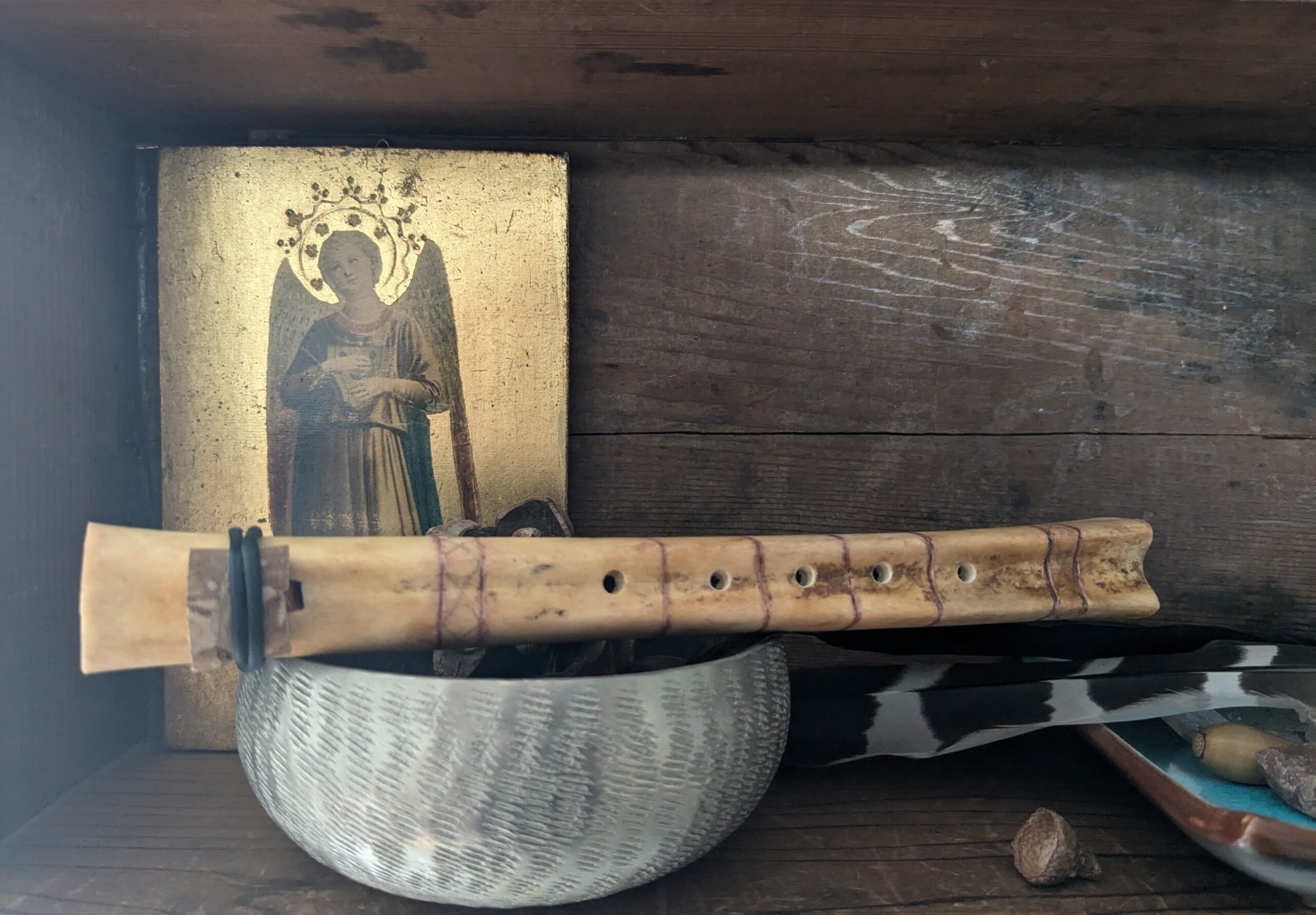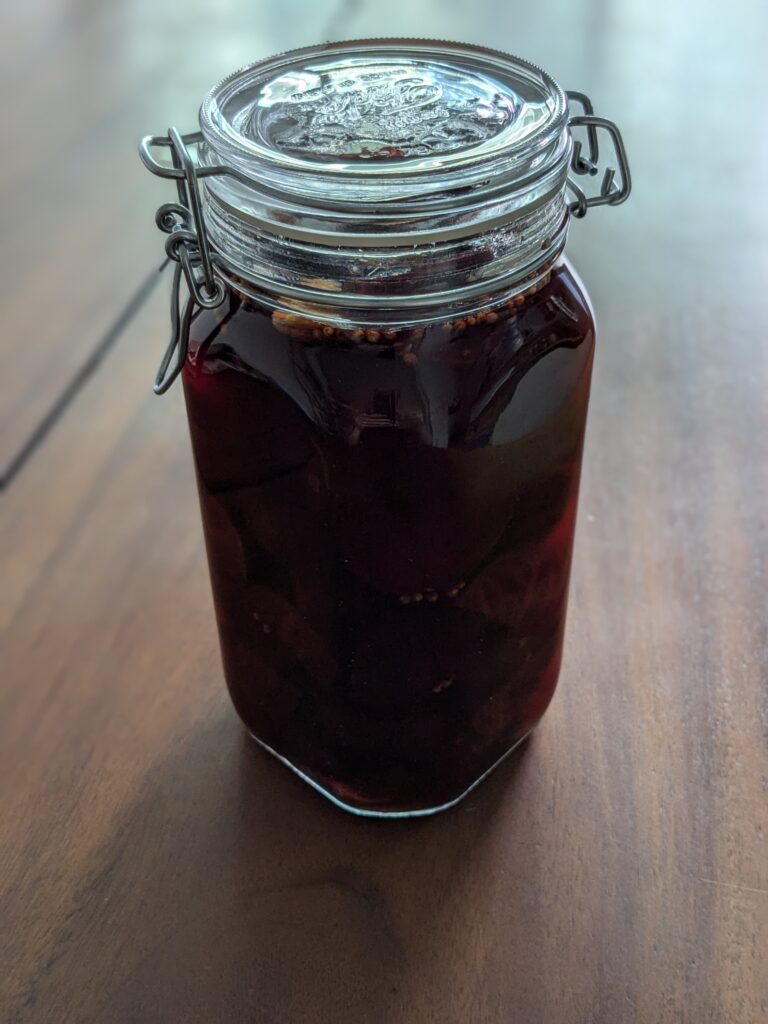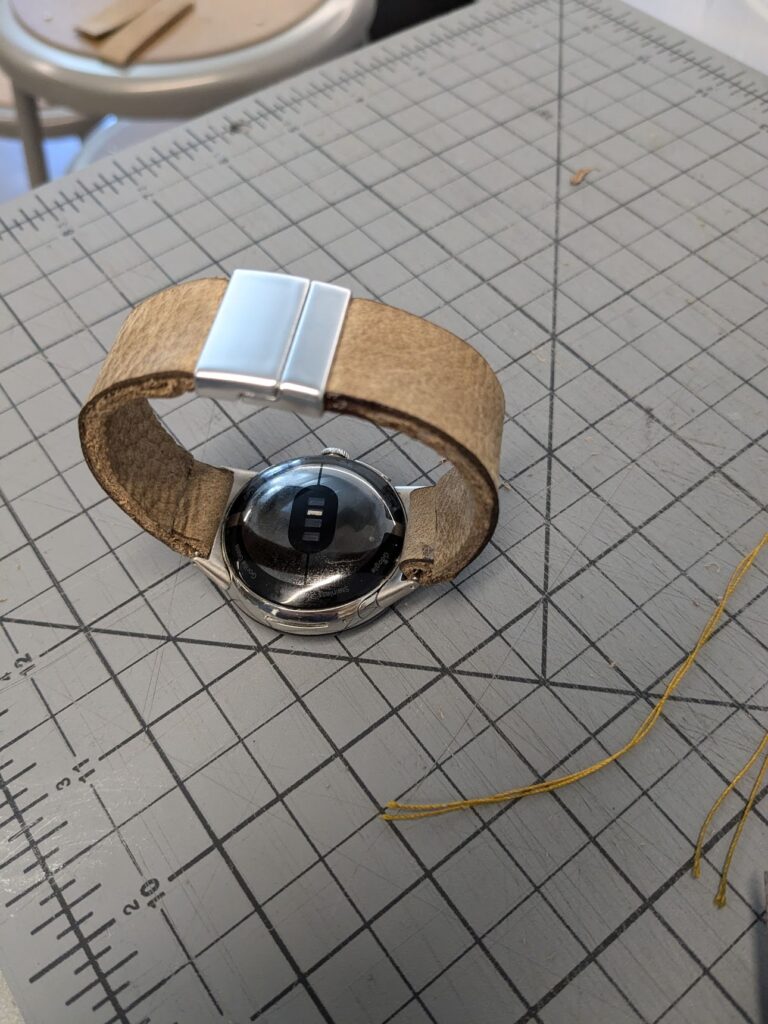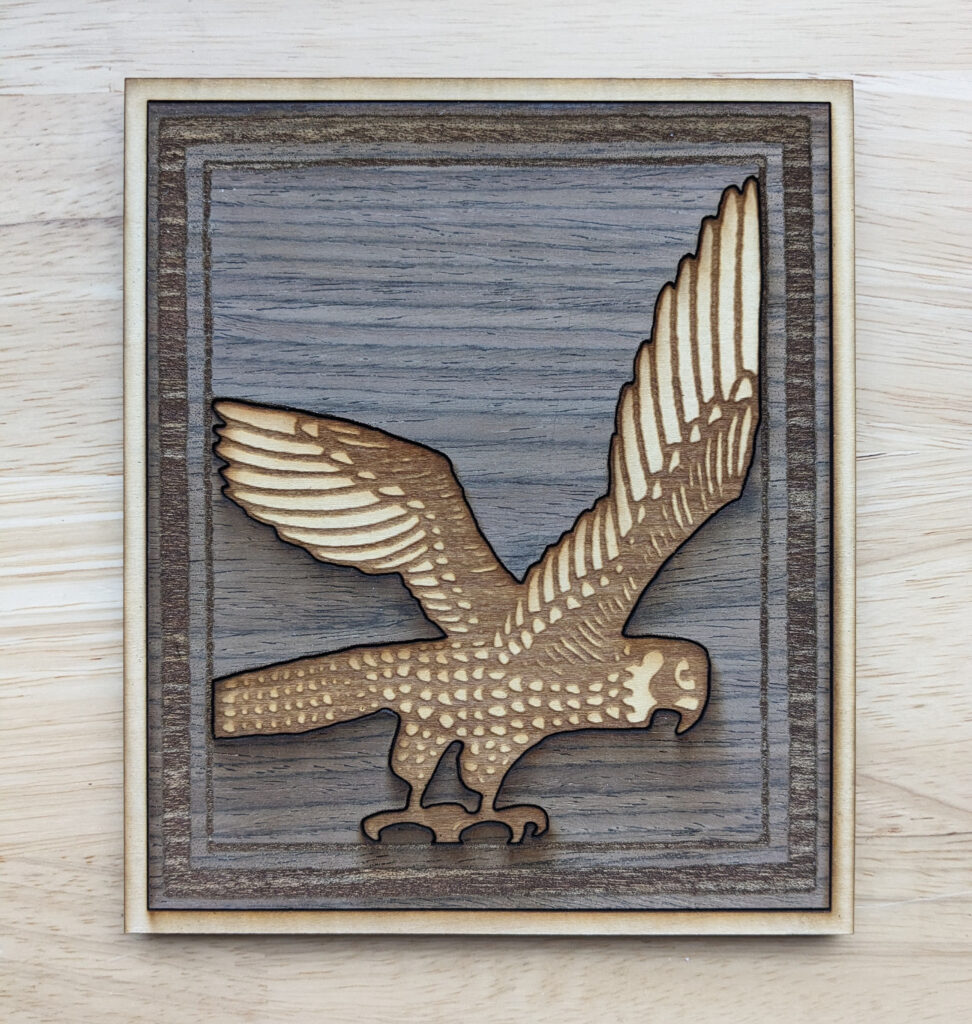I’m working on a middle grade fantasy book called The Bone Flute. The book, surprisingly enough, features a magical flute made from a vulture’s wing bone. I have made branch flutes and bamboo flutes but never bone so I decided to give it a try. It’s not easy to get a wing bone from a vulture. In fact, vultures are protected under the migratory bird act and only enrolled members of a native american tribe can use their feathers and bones. These must be requested from the national repository. So, I decided to use a deer bone. I ordered two femurs from Centralia Fur and Hide.
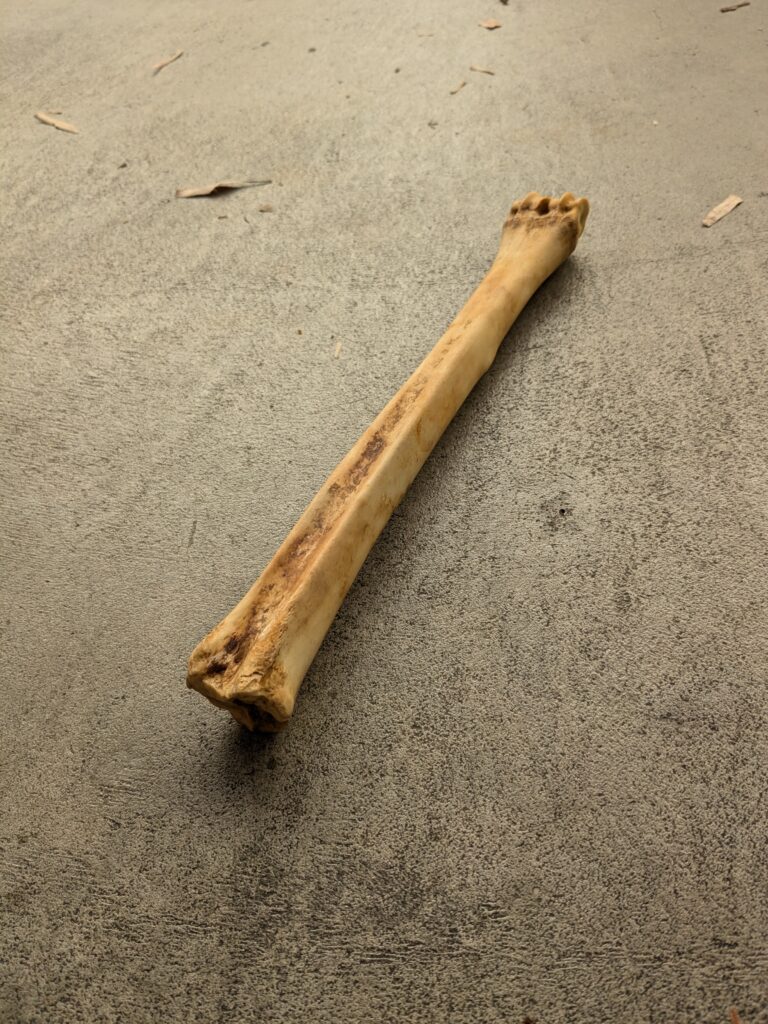
First, I sawed off the ends:
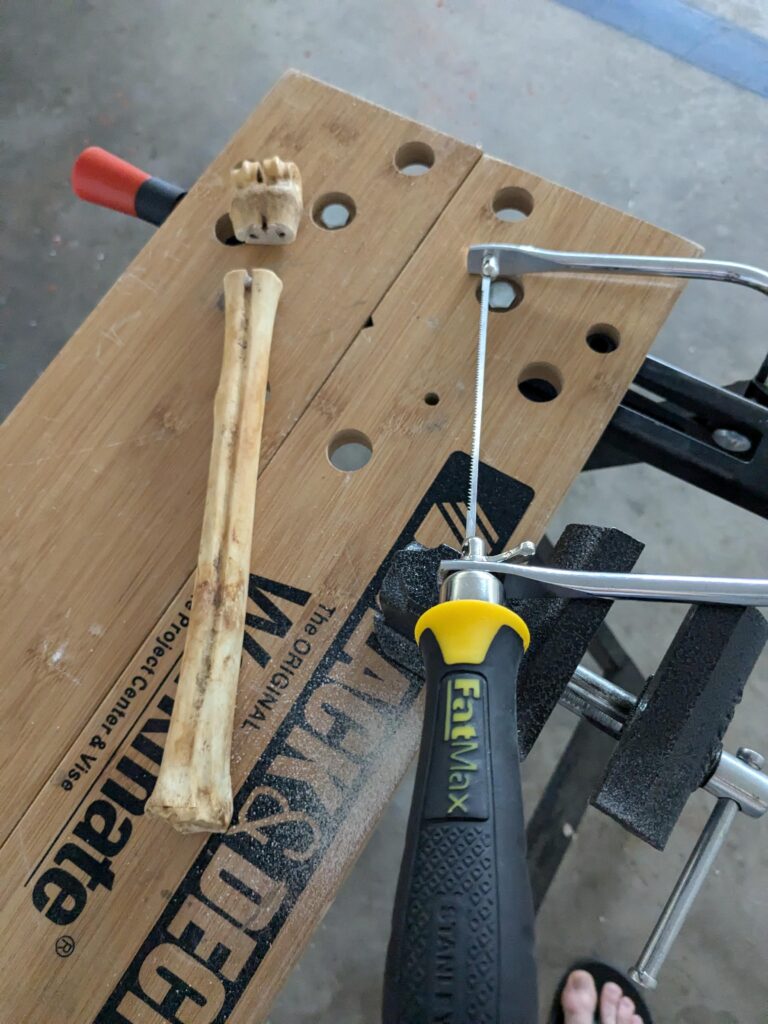
The next task was to clean out the marrow. I used a variety of tools including a drill with some long bits, a skewer, and a disposable chopstick from my last Thai takeout experience.
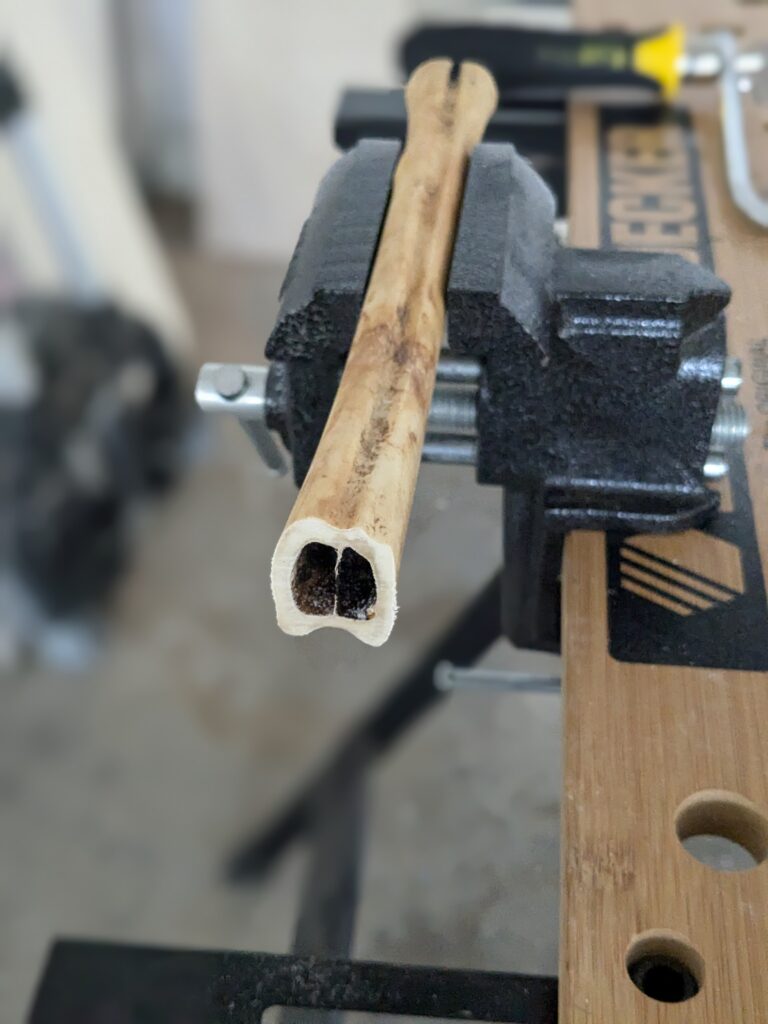
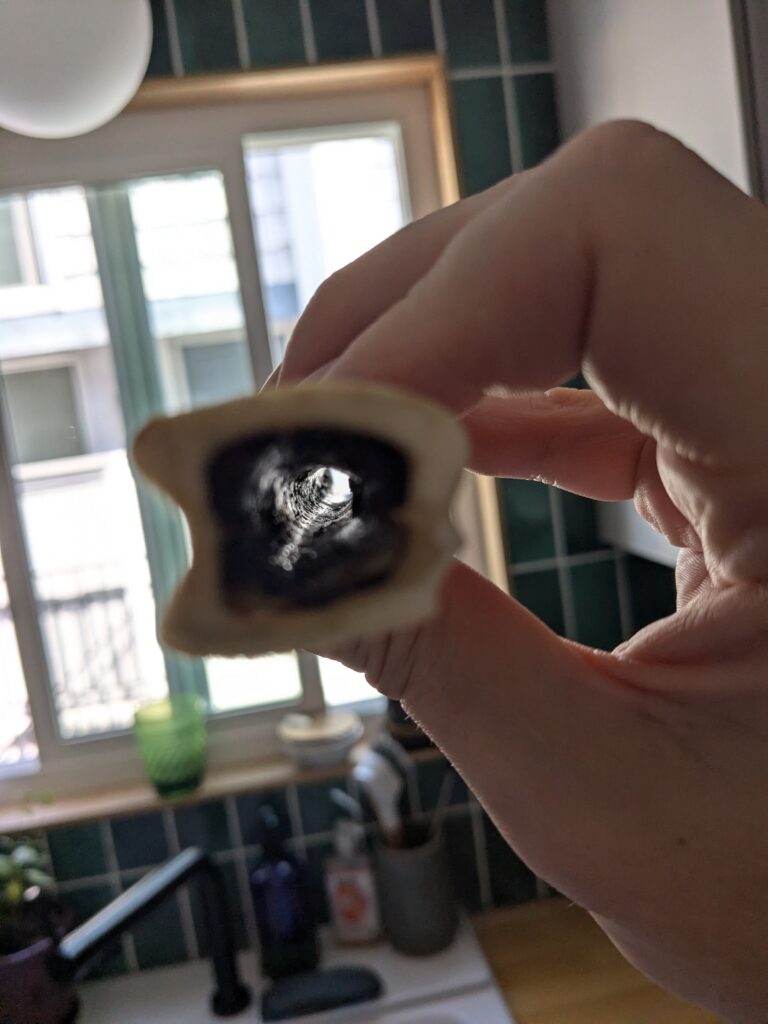
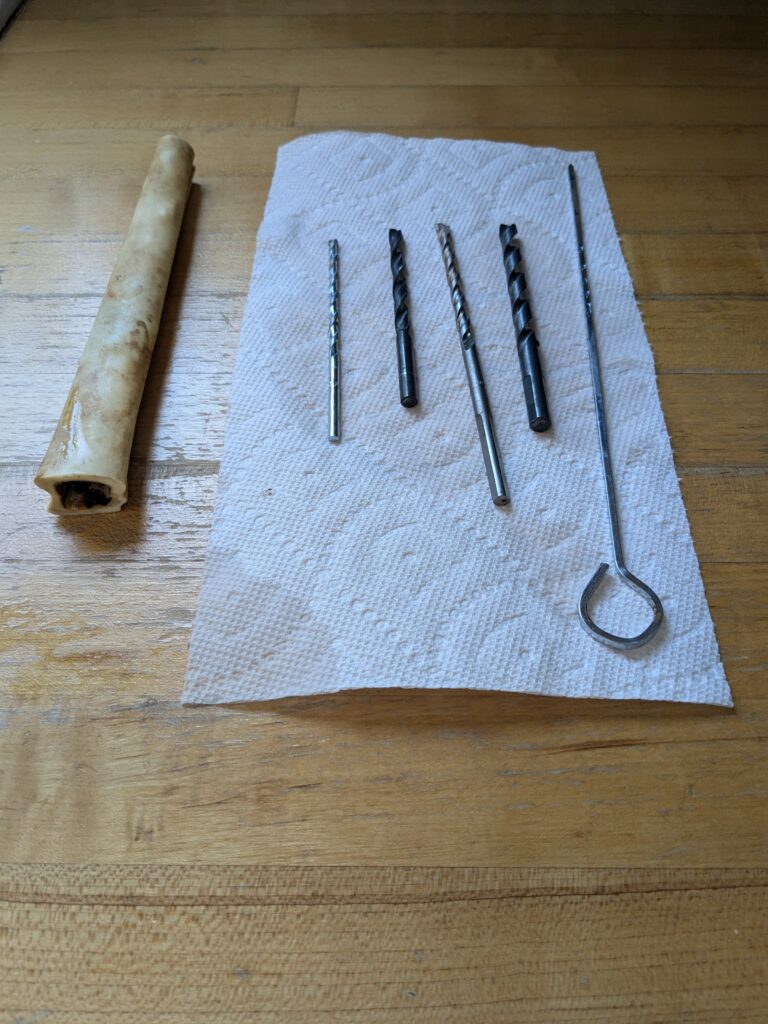
Next, I boiled it to get rid of any remaining marrow inside the bone. Once it was cool and dry, I marked where I wanted the sound hole and finger holes. I used one of the ancient flutes found on this page as a reference for the placement of the holes and also the ‘rule of thirds’ idea from this site.
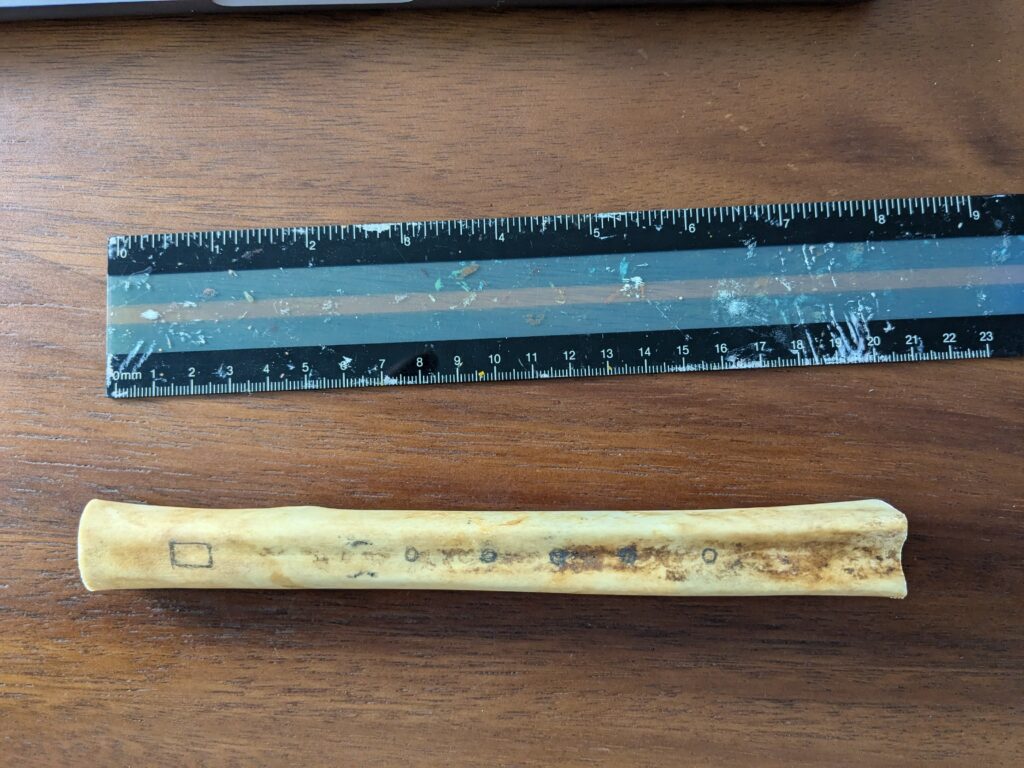
After I drilled the holes, I shaped the sound hole with a variety of small files. The idea is that it should be shaped like this (with the clay plug and wood block shown as well):

If everything is shaped correctly, the air will flow up the ramp, hit the cutting edge, and do some kind of thing you need an advanced physics degree to understand that will result in a nice sounding tone. You can adjust the wood block by sliding it back and forth to change the amount of air flowing up over vs. back into the flute. Here it is with the holes cut and shaped and the clay plug. I used no-fire modeling clay for the plug.
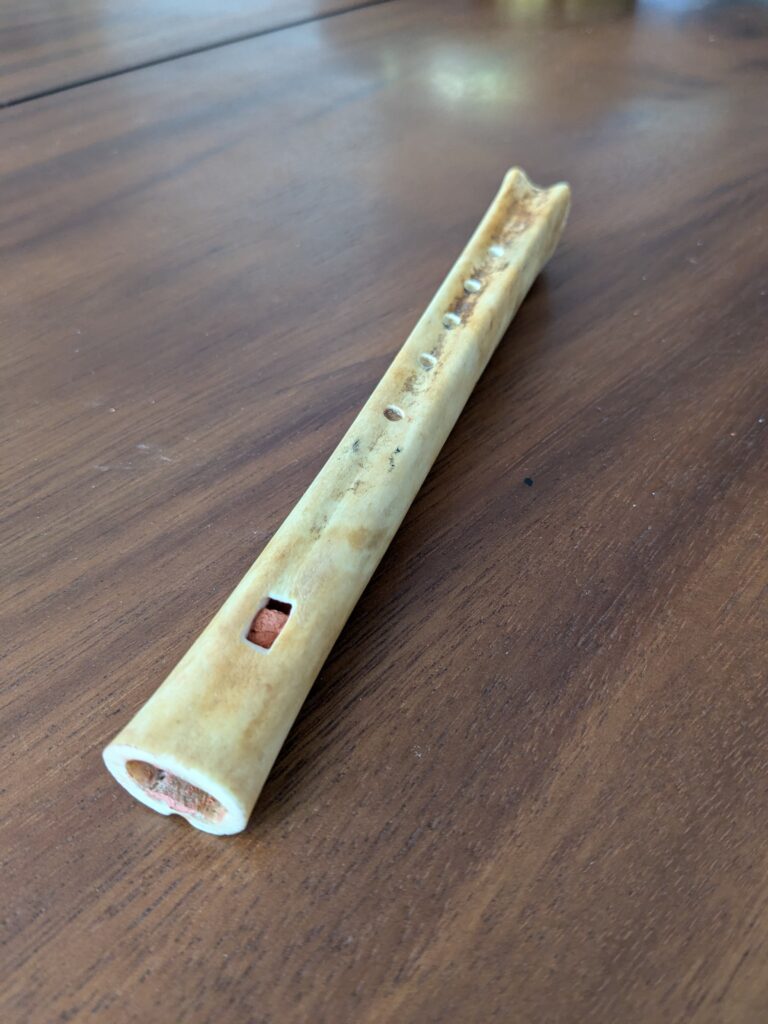
Finally, I carved a bit of wood for the block and did some decoration:
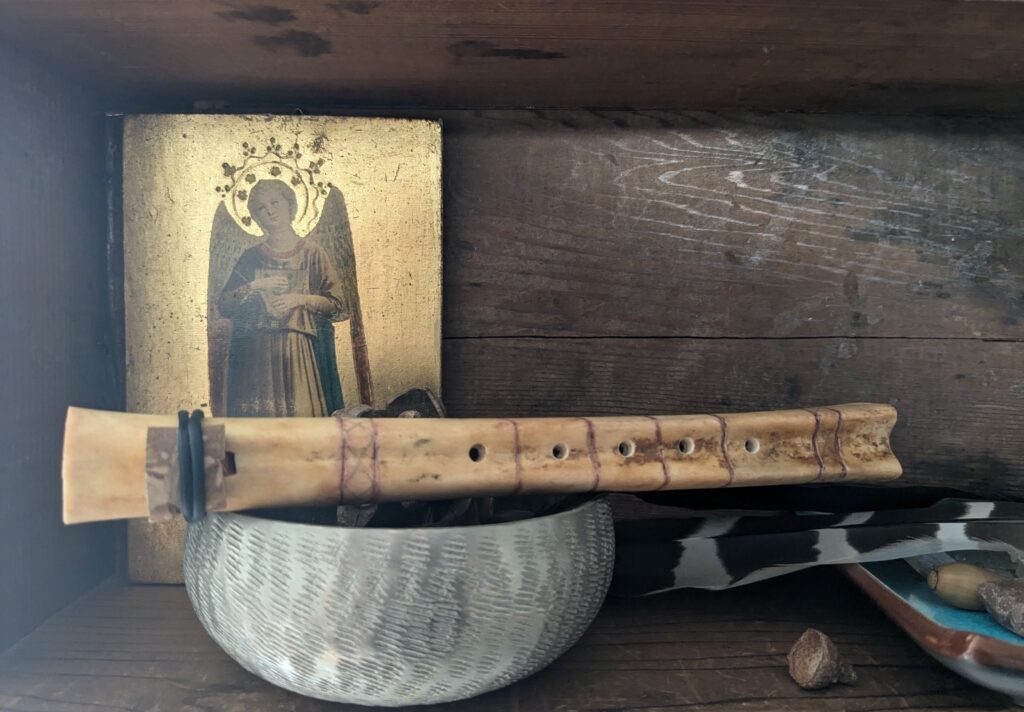
I tested all possible notes that it can play and came up with a pentatonic scale that goes A# B D E F#. Here is a little recording of what it sounds like (I’m not a musician so please don’t judge):

